As a landscaping or masonry expert, it is essential to know how to cut pavers. Pavers are an excellent addition to any property and offer numerous benefits, including durability, versatility, and aesthetic appeal. However, one of the most common issues that professionals face with pavers is cutting them accurately and precisely according to the project’s requirements.
With the right tools and techniques, cutting pavers can be a straightforward process that can save time and enhance the overall look of your project. This article will provide you with practical tips on how to cut pavers like a pro. Whether you are working on a patio, walkway, or driveway project, these tips will help you achieve clean cuts that fit perfectly into your design scheme. So let’s get started and learn how to master the art of cutting pavers!
Understanding Paver Materials
Pavers have become a popular choice for homeowners looking to enhance their outdoor living spaces. These interlocking blocks are not only aesthetically pleasing but also durable. Paver durability is attributed to the materials used in their manufacturing, such as concrete, brick, and natural stone. These materials can withstand heavy foot traffic, extreme weather conditions, and resist fading from exposure to UV rays.
One of the benefits of using pavers is the wide range of color selection available. This allows homeowners to choose colors that complement their home’s exterior and create a cohesive look throughout their landscape design. The color options are endless and can be mixed and matched to achieve various patterns and designs.
It’s essential to understand your paver material before cutting them for your project. Each material has unique characteristics that require different tools for cutting. Choosing the right tools for the job can make all the difference in achieving a clean cut without damaging your pavers.
Choosing The Right Tools For The Job
Understanding Paver Materials is crucial before starting any landscaping or masonry project. Once you have chosen the perfect paver, the next step is to cut them into your desired shape and size. Cutting pavers requires precision and expertise, so it’s essential to choose the right tools and safety gear for the job.
Choosing the right diamond blade is critical when cutting pavers. The best type of blade for this job is a diamond blade. These blades are made up of tiny diamond particles that are embedded in a metal matrix. They are designed to cut through hard materials like concrete, brick, and stone with ease. Diamond blades come in different sizes and shapes, so make sure you choose one that fits your saw.
Safety gear for cutting pavers is also crucial since it can be a dangerous task without proper protection. You will need to wear eye protection, earplugs or earmuffs, gloves, long sleeves, and pants to avoid any injuries from flying debris or dust. Additionally, make sure you have a stable work surface and secure the paver with clamps before cutting.
Measuring and marking your cuts accurately is vital before starting any cutting process. You can use a chalk line or a marker to mark your cuts on the paver’s surface. Remember to measure twice before making any cuts as mistakes can be costly and time-consuming. With these tips in mind, you’re ready to start cutting pavers safely and efficiently!
Measuring And Marking Your Cuts
Achieving a perfect cut when working with pavers requires accuracy in measuring and marking. A slight mistake can ruin the entire project, so it’s essential to know how to measure correctly. There are different measuring techniques you can use depending on the shape of your pavers.
For straight cuts, use a straight edge or chalk line to mark a straight line where you want the cut. Make sure the line is visible enough to guide your saw blade. For curved cuts, use a flexible material like a hose or rope to outline the curve. Once you have marked your lines, double-check them before proceeding with cutting.
Cutting angles is another crucial aspect of cutting pavers. Most paver projects require angled cuts for corners or circular designs, so it’s necessary to know how to make precise angle cuts. To do this, use a protractor or an adjustable bevel gauge to determine the angle of your cut accurately. Alternatively, you can create an angled jig that fits onto your saw’s base plate for more straightforward operation.
To summarize, measuring and marking are critical steps when cutting pavers for any project. It would be best if you took time and care in ensuring that your measurements and markings are accurate before making any cuts. Additionally, knowing how to cut angles is essential when creating intricate designs using pavers.
Before we proceed with safety precautions when cutting pavers, let’s take note that any outdoor home improvement project comes with risks; hence it is crucial to prioritize everyone’s safety in the area while executing the task.
Safety Precautions When Cutting Pavers
Now that you have measured and marked your pavers, it’s time to move on to cutting them. This is where the real work begins. But don’t worry; with the right tools and techniques, cutting pavers can be a breeze.
First and foremost, before you start cutting pavers, make sure you have all the necessary safety gear. This includes eye protection, ear protection, dust mask, gloves, and steel-toed boots. Paver cutting can create a lot of dust and debris, so it’s essential to protect yourself from potential injury.
When it comes to cutting techniques, there are several options available. You can use a chisel and hammer for straight cuts or a circular saw with a diamond blade for curved cuts. Whatever method you choose, make sure you follow the manufacturer’s instructions carefully to ensure proper usage and avoid accidents.
| Cutting Tool | Pros | Cons | Cost |
|---|---|---|---|
| Chisel and Hammer | Inexpensive, precise cuts | Time-consuming, difficult for large projects | Low |
| Circular Saw with Diamond Blade | Quick cuts, efficient for large projects | Expensive tool and blades, potential for accidents if not used properly | High |
As you can see from the table above, each cutting tool has its advantages and disadvantages. It’s up to you to decide which one works best for your project based on its size and complexity. Remember always to prioritize safety when working with power tools such as circular saws.
Next section: Straight Cuts with a Chisel and Hammer
Straight Cuts With A Chisel And Hammer
- In order to make straight cuts in pavers, one must first gather the necessary tools, such as a chisel, hammer, and goggles for eye protection.
- After the tools are gathered, the area to be cut must be marked with a chalk line or permanent marker.
- Once the area is marked, it is important to place the chisel in a perpendicular position to the paver, so as to make a clean cut.
- Additionally, the chisel should be placed at a slight angle to the marked line, and then tapped lightly with the hammer.
- The chisel should then be struck in a controlled fashion with the hammer, using the marked line as a guide.
- Finally, the cut should be inspected to ensure that it is clean and straight, and if necessary, further adjustments may be made by repeating steps 3-5.
Gather Tools
To achieve a clean and precise cut on your pavers, it is essential to gather the right tools. Before you start cutting, make sure you have a chisel and hammer set, safety goggles, and gloves. The chisel should be made of hardened steel with a flat end for striking and a sharp edge for cutting. Ensure that the chisel is well-maintained and sharpened regularly to avoid damaging your pavers.
Proper tool storage is also crucial in maintaining the quality of your tools. After use, clean them thoroughly to remove any dirt or debris that may have accumulated during operation. Store the tools in a dry place to prevent rusting and damage. It’s also important to keep them away from children’s reach as they can be dangerous when mishandled.
In conclusion, gathering the right tools for cutting pavers is only half the job done. Tool maintenance and proper storage are equally important factors that will determine how long your tools will last while keeping them in top condition. With these tips in mind, you can ensure that your tools are ready for use whenever you need them.
Mark The Cut
As a landscaping or masonry expert, achieving straight cuts on pavers requires the right tools and techniques. In addition to having a chisel and hammer set, safety goggles, and gloves, marking the cut is an essential step in ensuring clean results. Using a pencil and ruler to mark the cut before cutting helps you achieve precision and accuracy.
To make straight cuts on your pavers, you can also use a chalk line for added guidance. A chalk line is a tool that allows you to create straight lines by snapping a cord coated in colored chalk onto the surface of your paver. This technique is especially useful when working with larger pavers or making multiple cuts.
When marking the cut or using a chalk line, it’s important to pay attention to alignment and ensure that all lines are straight before beginning the cutting process. This will help you avoid errors in measurement and maintain consistency throughout your project. By taking these steps, you can achieve straight cuts on your pavers with ease and confidence.
Strike With Hammer
When it comes to cutting pavers, using a chisel and hammer set is one of the most common techniques. To achieve straight cuts with this method, it’s essential to follow specific guidelines. One of these guidelines is to strike the chisel with a hammer in a controlled manner.
Using a hammer is an important part of the cutting process as it determines the level of force applied to the chisel. When striking the chisel, you should hold the hammer firmly and aim for accuracy to avoid damaging your paver or injuring yourself. It’s also recommended to use a lighter hammer for softer materials and heavier ones for harder ones.
There are several cutting techniques that can be used with a chisel and hammer set, including splitting and trimming. Splitting involves creating a break in the paver by making several shallow cuts along its surface before applying force with the hammer and chisel. Trimming, on the other hand, involves making precise cuts by gradually removing thin layers from the edge of the paver until it reaches its desired size. By mastering these techniques and incorporating proper striking methods, you can achieve straight cuts on your pavers effortlessly.
Straight Cuts With A Circular Saw
When it comes to cutting pavers, a circular saw can be a handy tool to use for straight cuts. However, before getting started, it is important to ensure that your circular saw is in good condition and properly maintained. This includes checking the blade for any damage or dullness and making sure the saw’s safety features are functioning properly.
To make straight cuts with a circular saw, you will need to start by marking the cut line on your paver using a chalk or marker. Next, use clamps or a vice to secure the paver in place and prevent it from moving during the cutting process. When you’re ready to begin cutting, make sure the blade is set to the appropriate depth and slowly guide it along the marked line. It’s important to keep a steady hand and not force the blade through the paver as this can cause damage or uneven cuts.
If you’re planning on tackling DIY paver projects regularly, it’s important to keep up with circular saw maintenance. This includes regularly cleaning and oiling the blade, checking for any loose parts or screws, and ensuring that all safety features are working correctly. By taking these steps, you’ll not only prolong the life of your saw but also ensure that your cuts are clean and precise every time.
Moving onto curved cuts with a chisel and hammer, this method requires a bit more precision and patience than straight cuts with a circular saw.
Curved Cuts With A Chisel And Hammer
Cutting pavers into curved shapes can be accomplished by using a chisel and hammer. To start, it is important to create a template of the desired curve using a flexible material such as cardboard or thin plastic. This template will serve as a guide for cutting the paver into shape.
Next, place the paver on a sturdy surface with enough space to swing the hammer and chisel. Using the template as a guide, score along the line with the chisel. Then, continue to chip away at the paver along the scored line until it breaks off cleanly. Practice and patience are key when mastering this technique.
It is important to note that this method may not produce perfect curves, but it does allow for more organic shapes than straight cuts with a saw. It is also a good option for small projects or intricate designs where using a saw might not be feasible. In our next section, we will explore another method for cutting curved shapes: using a circular saw.
Curved Cuts With A Circular Saw
After mastering the art of curved cuts with a chisel and hammer, you may want to explore alternative cutting methods for pavers. One such method is using a circular saw with a specialized blade designed for cutting through concrete and other tough materials. Circular saw blades come in various sizes, but for paver cutting purposes, a 7-1/4 inch blade will suffice.
When using a circular saw for paver cutting, it’s important to take safety precautions such as wearing protective eyewear and gloves. Additionally, make sure that the blade is properly adjusted to the appropriate depth setting before making any cuts. Keep in mind that circular saws tend to create more dust than other cutting methods, so it’s recommended to wear a mask or use a dust collection system to minimize the amount of debris produced.
While using a circular saw can be an efficient way to cut straight lines in pavers, it may not be the most precise method for intricate cuts or curves. In these cases, using a wet saw with diamond blades may be necessary. Wet saws utilize water to cool down the blade and prevent overheating while cutting through hard materials like concrete and stone. This method also produces less dust and creates smoother edges on your pavers.
Using A Wet Saw For Precision Cuts
When it comes to cutting pavers, using a wet saw is an excellent option for achieving precision cuts. Wet saws have a diamond blade that rotates at high speed, allowing for smooth and accurate cuts. Additionally, they feature water cooling, which keeps the blade and material cool during the cutting process.
Before beginning, make sure you have all necessary safety equipment, including goggles and ear protection. To use a wet saw correctly, first adjust the blade depth to ensure it will cut through the paver entirely. Next, turn on the water pump to begin water cooling and lubrication of the blade. Then feed the paver into the saw gently and steadily until you achieve your desired cut.
One advantage of using a wet saw is its ability to cut angles accurately. Adjusting the blade’s angle allows for beveled or angled cuts that are difficult to achieve with other tools. Remember always to read your manufacturer’s instructions carefully before beginning any project with a wet saw.
Troubleshooting Common Cutting Problems
Cutting pavers can be a challenging task, but it is essential to ensure that the final project looks professional and polished. Unfortunately, many people make common mistakes when cutting pavers, which can result in irregular shapes or uneven sizes. It is crucial to avoid these issues by carefully measuring and marking each paver before making any cuts.
One of the most common mistakes when cutting pavers is using the wrong tools or blades. It is essential to use a masonry saw or diamond blade specifically designed for cutting stone or concrete. Using an incorrect blade could result in chipping, cracking, or even breaking the paver. Additionally, it is important to wear protective gear such as safety glasses, gloves, and earplugs when operating power tools.
Cutting irregular shapes can also be a challenge for those new to working with pavers. It is best to start with simple straight cuts before moving on to more complex shapes such as curves or angles. When cutting irregular shapes, it may be helpful to create a template from cardboard or paper to trace onto the paver before making any cuts. This will help ensure accuracy and consistency throughout the project.
To avoid frustrations during your project and ensure its success, it’s important not only to cut correctly but also take care of your tools so they function properly for future use. In the subsequent section on cleaning and maintaining your tools, we will cover tips for extending the life of your saw blades and other tools used for cutting pavers. By following these guidelines, you can ensure that you have the proper equipment at hand whenever you need it without having to worry about potential problems caused by poor maintenance practices.
Cleaning And Maintaining Your Tools
Maintaining tools is a crucial aspect of any landscaping or masonry work. Proper maintenance ensures that your tools are in good condition and ready to use whenever you need them. To ensure that your tools last longer, it’s important to clean them after every use. Use warm soapy water, rinse with clean water and dry thoroughly before storing them.
Storage solutions for your tools can also play a significant role in their longevity. Keep them stored in a dry area with low humidity to prevent rusting. Avoid exposing them to direct sunlight, which may cause damage to plastic parts or handles. Consider investing in tool racks or organizers that will keep your tools organized and easily accessible.
Proper maintenance and storage of your tools not only increases their lifespan but also ensures safe usage. Always inspect your tools before using them for wear and tear, cracks or loose parts, and replace any damaged parts immediately. Taking care of your tools is an essential part of being a professional landscaper/mason and will help you deliver exceptional results to clients consistently.
As we finish discussing the importance of maintaining and storing your tools properly, it’s vital to understand how to dispose of paver scraps correctly. These scraps can be hazardous if left lying around as they can cause injury to people or animals passing by. In the next section, we’ll discuss proper disposal techniques that will keep everyone safe while helping protect the environment from potential harm caused by improper disposal methods.
Proper Disposal Of Paver Scraps
Cleaning and maintaining your tools is crucial in ensuring that they remain in good working condition. When it comes to cutting pavers, having well-maintained tools can make the job easier and more efficient. However, once you have cut your pavers, you may be left with scraps that need to be disposed of properly.
Recycling options are available for those who want to reduce their environmental impact when disposing of paver scraps. Many cities and towns have recycling centers that accept concrete waste, including paver scraps. These centers will often crush the concrete into smaller pieces which can then be used as a base material for new construction projects.
It’s important to consider the environmental impact of our actions when working on landscaping or masonry projects. By properly disposing of paver scraps through recycling options, we can help reduce the amount of waste that ends up in landfills. This not only benefits the environment but also saves space in landfills for other types of waste.
Transition: Now that we’ve discussed proper disposal methods for paver scraps, let’s move on to cost-saving tips for cutting pavers without sacrificing quality.
Cost-Saving Tips For Cutting Pavers
Cutting pavers is an essential skill for those who are into landscaping or masonry. While many people prefer to hire professionals for this task, it can be cost-effective to do it yourself. With the right tools and techniques, cutting pavers becomes a breeze.
If you are on a tight budget, there are several DIY techniques you can use to cut pavers. One of the most popular methods is using a circular saw with a diamond blade. This tool can make clean cuts and is suitable for large projects. Another alternative method is using a chisel and hammer to score the paver along the desired line before breaking it.
To save money when cutting pavers, consider these cost-saving tips:
- Rent tools instead of buying them if you only need them for one project
- Buy second-hand tools from local classifieds or online marketplaces
- Use leftover pavers from previous projects
- Plan your design carefully before cutting the pavers to avoid waste
In conclusion, cutting pavers yourself can save you money in the long run if done correctly. By following DIY techniques and cost-saving tips like renting tools and planning your design carefully, you can create beautiful outdoor spaces without breaking the bank. However, hiring a professional paver cutter may still be necessary for larger or more complex projects that require expertise beyond your skill set.
Hiring A Professional Paver Cutter
While cutting pavers can be a cost-saving measure, it is important to weigh the benefits and drawbacks of doing it yourself. One of the advantages of DIY paver cutting is that you have complete control over how the finished product will look, giving you the opportunity to create a unique design for your landscape or patio. Additionally, you may save money on labor costs by doing it yourself.
However, there are also several drawbacks to consider before embarking on a DIY paver cutting project. Firstly, it can be time-consuming and physically demanding work that requires specialized equipment and knowledge. Secondly, mistakes made during the cutting process can result in wasted materials or uneven surfaces that may need to be corrected by a professional cutter.
If you decide that hiring a professional paver cutter is the best option for your needs, there are several factors to consider before making a decision. Firstly, ensure that the cutter has experience working with the type of pavers you have chosen for your project. Secondly, ask for references and examples of previous work completed by the professional cutter. Finally, clarify their pricing structure and timeline for completing the project.
As much as showcasing your paver cutting skills might seem like an exciting prospect, it is important to carefully consider whether DIY paver cutting or hiring a professional cutter is the best course of action for your specific needs. By taking into account all of these factors and weighing up your options before making a decision, you can achieve beautiful results while minimizing any potential setbacks along the way.
Showcasing Your Paver Cutting Skills
Once you have mastered the art of cutting pavers, it’s time to showcase your skills. Creating creative designs is a great way to show off your expertise in paver cutting. With the right tools and techniques, you can make intricate patterns that will impress anyone who sees them.
One way to showcase your paver cutting skills is by taking on DIY projects. There are plenty of tutorials online that can help you create beautiful patios, walkways, and other outdoor features using pavers. By following these guides and incorporating your own unique design ideas, you can create stunning additions to your property that will be the envy of all your neighbors.
Another way to demonstrate your proficiency in cutting pavers is by offering your services to others. Many homeowners are looking for ways to enhance their outdoor spaces, but lack the skills or equipment necessary to do so themselves. By offering affordable rates and high-quality workmanship, you can help these people achieve their landscaping goals while also showcasing your expertise in the craft.
Markdown list:
- Experiment with different cuts and angles to add complexity and interest to your designs.
- Use contrasting colors or textures of pavers for added visual appeal.
- Consider incorporating curves or circles into your patterns for a more organic look.
- Don’t be afraid to think outside the box – sometimes the most innovative designs come from taking risks and trying new things.
By following these tips and tricks, you’ll be able to create stunning paver designs that showcase both your technical skill and artistic flair. Whether you’re working on a DIY project or offering services to others, there’s no limit to what you can achieve with this versatile material. So go forth and let your creativity shine!
Conclusion
In conclusion, cutting pavers can be a challenging task that requires careful planning and the right tools. As a landscaping/masonry expert, I recommend starting by understanding the materials you are working with and selecting appropriate tools for the job. It is important to measure and mark your cuts accurately and to take safety precautions when using power tools.
If you prefer a more traditional approach, straight cuts can be made with a chisel and hammer. Remember to dispose of paver scraps properly to avoid creating a hazard on your worksite. To save money, consider purchasing larger pavers that require fewer cuts or hiring a professional paver cutter for more complex projects.
As the saying goes, “measure twice, cut once.” Taking the time to carefully plan and execute your cuts will result in beautiful and functional hardscaping features that will enhance your outdoor living space for years to come. With these tips and techniques, you can showcase your paver cutting skills and create stunning landscapes that will impress both clients and friends alike.
Image Credits

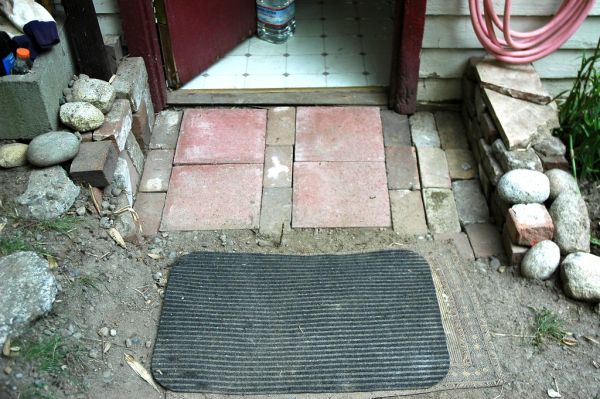




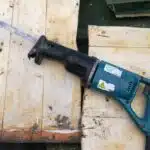

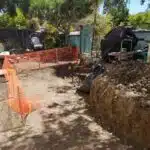



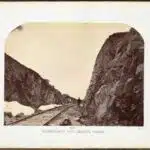
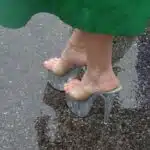

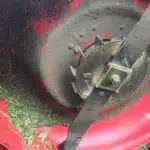
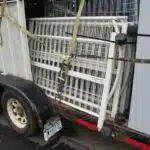


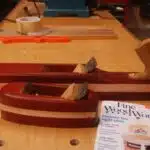




![Calculating How Much Stone Dust You Need 24 [Blog Post]Stone Dust © Oxfam Australia](https://green-life.blog/wp-content/uploads/2023/05/GdZVzgTqPhjq-150x150.jpg.webp)




